I look at labels. The woolens made by Lanificio Leo are not only “Made in Italy,” but the label features an adorable lamb. And we all know that the next best thing to eating a slice of pecorino (sheep’s cheese) is cuddling up with one of those fleecy little creatures. Okay, I haven’t actually ever done that, but when the temperature drops, I’m the first to stick my head through the neck of a woolen sweater.
VISITING A TEXTILE FACTORY IN CALABRIA

Lanificio Leo Logo
Recently, I had the opportunity to visit the Lanficio Leo textile factory in Soveria Mannelli, a town located on the Reventino Massif in the Province of Catanzaro. For those familiar with the international airport at Lamezia Terme, which is situated at the narrowest point on the Italian peninsula, the Reventino is the massif just to its north. The upland scenery on the drive to Soveria Mannelli is a little twisty, but quite picturesque.
Emilio Leo, fourth generation of the Leo family that originally founded the company in 1873, led the tour. His father, a very active nonagenarian, accompanied the guided visit, listening attentively to his son and occasionally gesturing towards the various machines in the historic plant.
Emilio was an impressive speaker and docent of the factory. Not only did he give a thorough history of the company, but he talked of local issues, the collective business mentality and his vision for the future of the development of his company and the region. I don’t think he was running for anything, but I was ready to vote for him nonetheless. I enjoy a passionate presenter and he gave off very positive vibes about his enterprise and its activities.
HISTORY OF LANIFICIO LEO
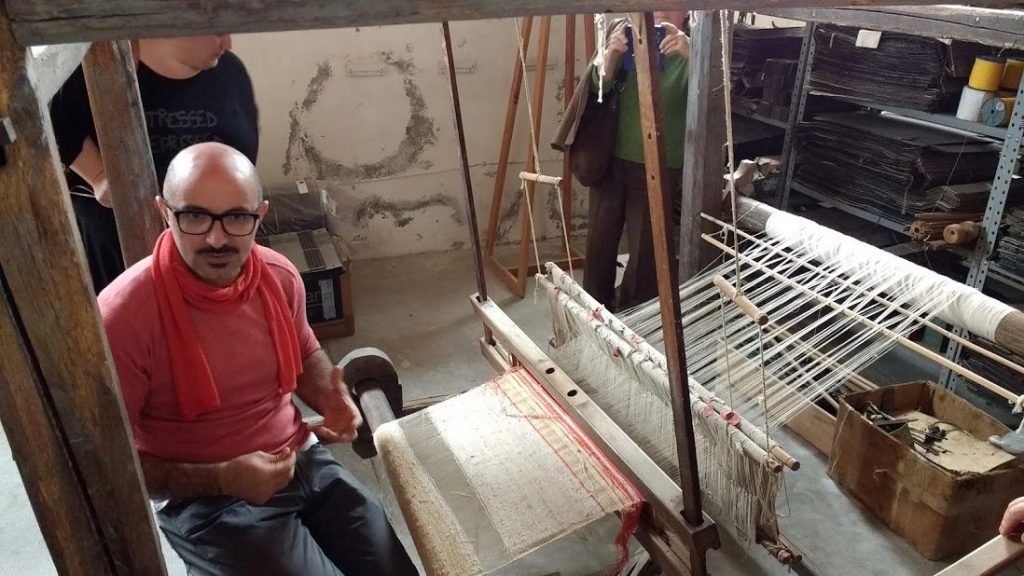
Emilio S. Leo, Chairman and Creative Designer of Lanificio Leo, at a 19th-century hand loom in the Museum Factory, Soveria Mannelli, Calabria
Lanificio means woolen factory in Italian. The family workshop started out with animal-powered machines and hand looms in a nearby town called Carlopoli. At the beginning of the 20th century, the operation expanded to Castagna, the area of Carlopoli where the Corazzo Abbey flourished for many centuries. After the First World War, a water-powered woolen mill was launched in Bianchi, a small village in the Province of Cosenza.
The operation switched over to electric power in 1935 with the opening of the factory in Soveria Mannelli, thereby ending the reliance on an inconsistent water supply. In addition, the plant’s new location was closer to a national road as well as a rail line. The company flourished through the 1960s, but went into decline from the mid-70s largely as a result of overseas competition and the loss of raw materials. In the area, the Gentile di Puglia or Puglian Merino, a sheep that produced a very high-quality wool, was replaced by a Sardinian sheep that yielded better cheese, but lower-quality wool only suitable for the manufacture of coarser textiles.
The story might have ended in the early 1990s, but for Giuseppe, Emilio’s father, who inherited what was left of the business. He held onto the old machines in the hopes of a comeback or at the very least of preserving both a family and an industrial legacy. Then, in the late 90s Emilio approached the enterprise with new eyes and a vision that combined tradition with innovation. His organizational imagination led Lanificio Leo to be honored as a finalist for Italy’s Guggenheim Business and Heritage Award and winner of Federculture’s Prize for Entrepreneurial Culture.
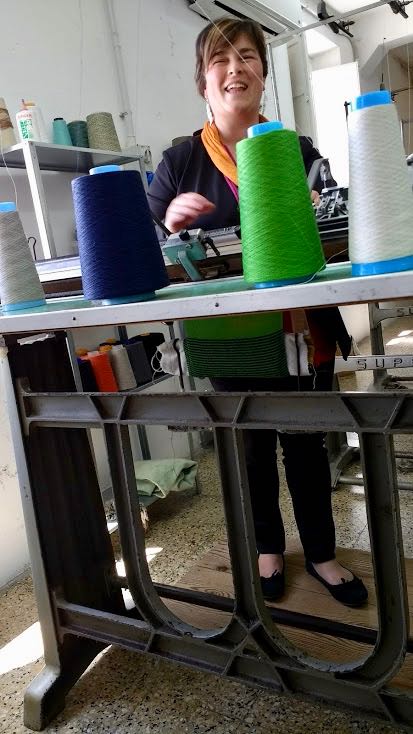
At Lanificio Leo Factory-Museum
MADE IN CALABRIA
As expected from a company associated with such recognition, Lanificio Leo’s production is firmly rooted in tradition. Emilio relaunched the business using the historic machinery, much of which is still utilized to produce textiles of a contemporary design. The factory-museum covers over 1,000 square meters (10,764 square feet) of floor space and is full of industrial machines ranging from a steam rotary press to mechanical shuttle looms.
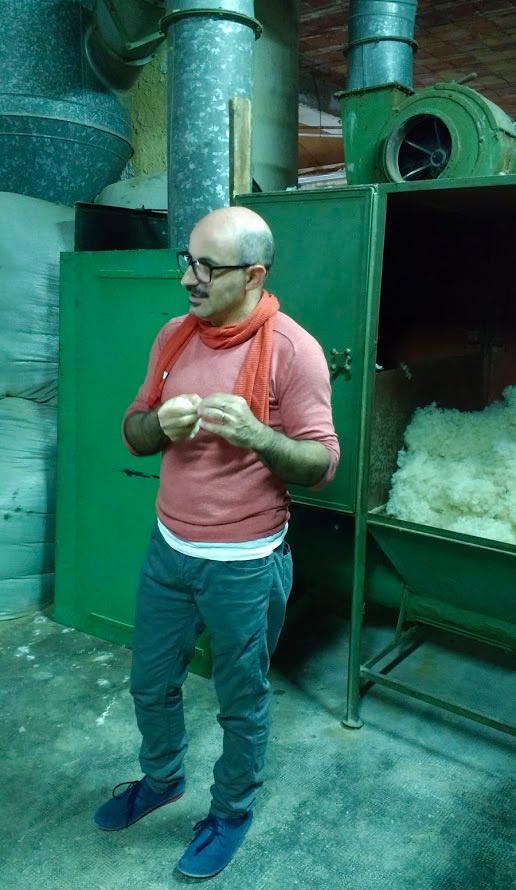
Emilio Leo giving a tour in front of an historic carding machine at Lanificio Leo
The machinery was impressive, starting with a large military-green carding machine that removed tangles from the raw material and bounced the fluffy wool into a catching receptacle to a cacophony of rattles and squeaks and the appreciative applause of the tour group. An even bigger conglomeration of wheels and pulleys stretched the wool up, over and around a route of pressings and pullings in a machine that looked like it came straight out of Gotham City.
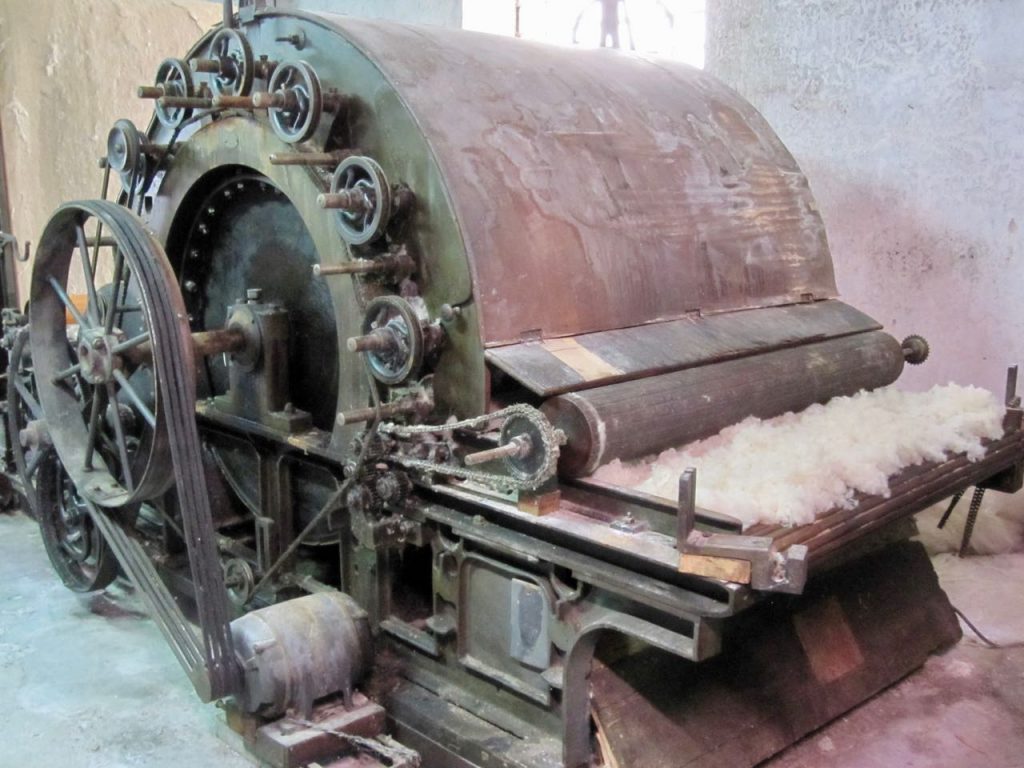
Lanificio Leo, Museum-Factory
Lanificio Leo also embraces modern technology. Thus, for example, alongside the weighty equipment of yesteryear, an ultramodern weaving machine features a streamlined, state-of-the-art design. The mechanism is apparently so complicated that it takes a couple of days to set a project up.
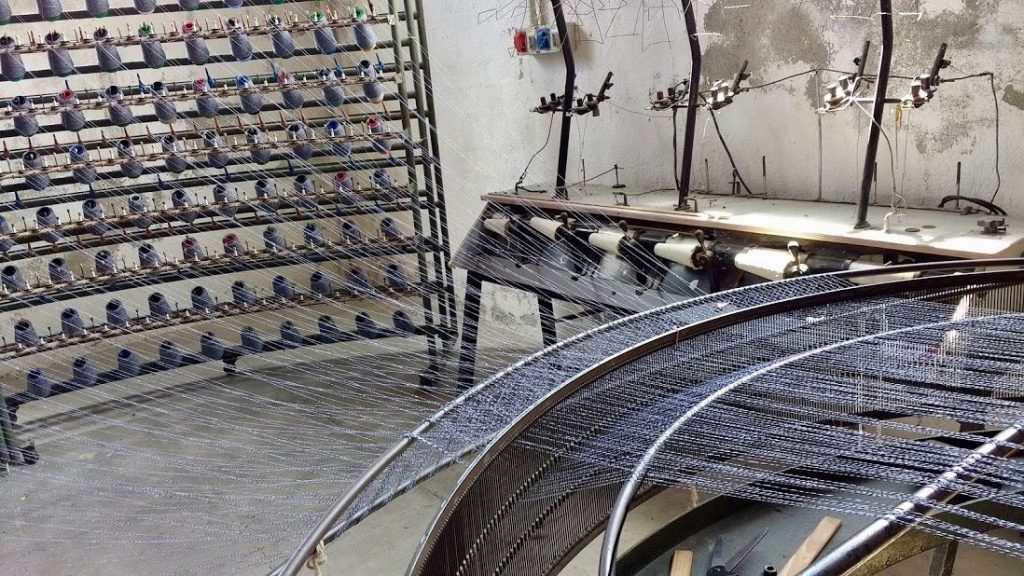
Modern Machinery at Lanificio Leo Textile Factory
MADE IN ITALY
Some of Lanificio Leo’s textiles are woven from raw materials that must be carded and spun, while others are made of yarn from other producers. The wool must be imported from countries, such as New Zealand, which is able to produce an excellent quality for a relatively low price. Perhaps someday a young agricultural entrepreneur will reintroduce the Puglia Merino in Calabria; however, until that time, Lanificio Leo uses available resources to fashion beautiful textiles Made in Italy.

“Made in Italy” Textiles at Lanificio Leo in Soveria Mannelli, Calabria
The company weaves blankets, scarves, sweaters, table linens and items made to order in wool, linen and wool blends. The designs are bold yet pleasing, simple and sophisticated. Lanificio Leo also hand prints decorations on fabrics from its collection of over 200 antique wooden blocks.
Giuseppe and Emilio Leo are proud of their family business that embraces history and artisan techniques and at the same time looks ahead towards the future. Lanificio Leo blends tradition and innovation, classic craftsmanship with modern interpretation, and produces quality Made in Italy textiles relevant for the 21st-century consumer.
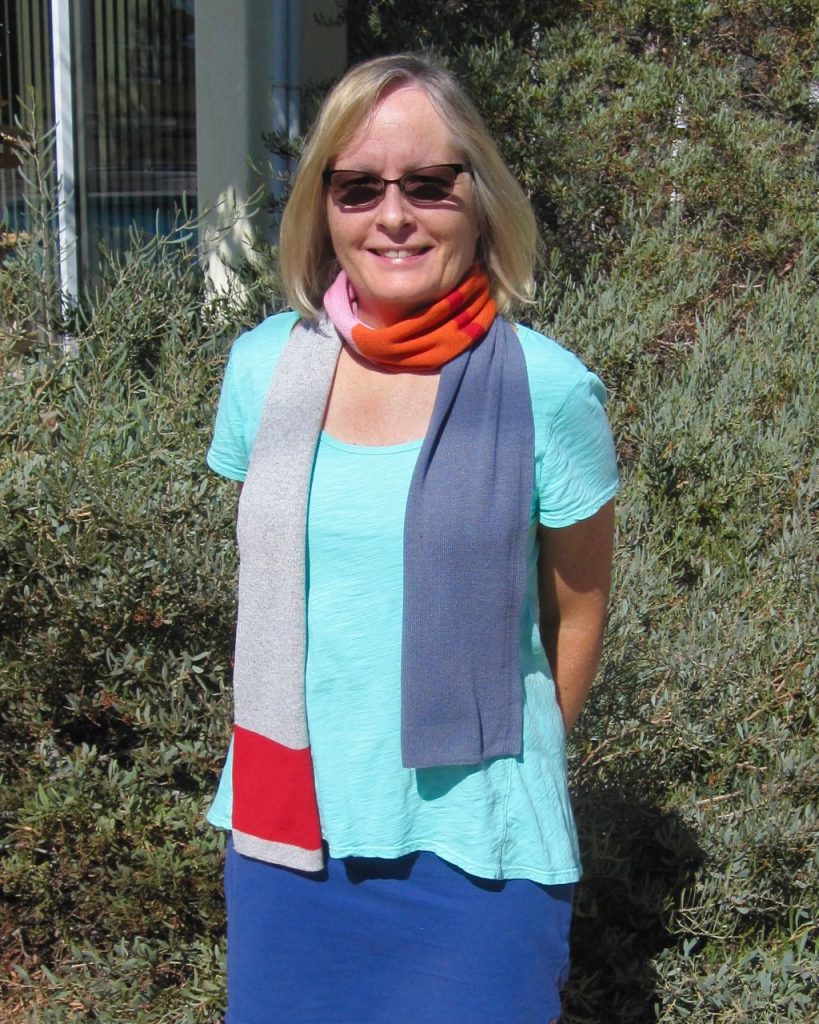
The Author wearing a Lanificio Leo scarf
Read about the medieval abbey nearby in my blogpost The Corazzo Abbey: Timeless Inspiration in Calabria. Visit the textile factory and store in Soveria Mannelli or take a virtual tour on the Lanificio Leo Facebook page. More about Calabrian textiles on my post Textile Artist Domenico Caruso, A “Made in Calabria” Original.
 Read more about the beautiful land in the toe of the Italian boot in Calabria: The Other Italy, my non-fiction book about daily life, history, culture, art, food and society in this fascinating southern Italian region.
Read more about the beautiful land in the toe of the Italian boot in Calabria: The Other Italy, my non-fiction book about daily life, history, culture, art, food and society in this fascinating southern Italian region.
Interested in visiting Calabria? Check out the itineraries of my in-depth Calabria tours.
“Like” Calabria: The Other Italy’s Facebook page and follow me on Karen’s Instagram and Karen’s Twitter for more beautiful pictures and information.
Sign up below to receive the next blog post directly to your email.

Comments 10
Our sheep were also very cuddely! IF, we still had them, we could ship them to Lanificio Leo’s factory!! 😉
You wear their scarf, very well!!
Author
Ha, ha – it could have given your sheep more of a purpose. Thanks for the compliment!
Is it possible to book a tour at the factory?
Thanks.
Author
Yes, certainly. Contact them directly by phone +39 0968 662027, through their Facebook page (link above) or by email – info at lanificioleo.com . They are located at Via Cava 43 in Soveria Mannelli.
Sounds like they’re still trying to do it at the highest level! Good to write about their story & especially the passion for what they produce! Bellissima❣️
Author
Yes, you can never go wrong with quality and integrity. Thanks!
A friend forwarded this to me as my father was born in Soveria Mannelli.
Recently I discovered my grandmother was a weaver. These looms must have
Been used by her.
Author
Wow, someone on Facebook also commented that her grandmother was from Soveria Mannelli and that she worked at this factory. It’s a small world!
When we went to Matera we were surprised to hear that the reason the economy of Matera collapsed was because Australian wool flooded the market.
Author
Living conditions in the Sassi actually began their decline in the 17th century. The Australian wool monopoly was just one factor of the collapse of the small-scale agricultural and pastoral economy due to modernization with large-scale farms exploiting workers and the land.